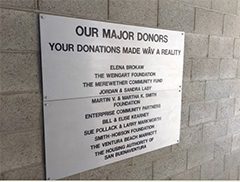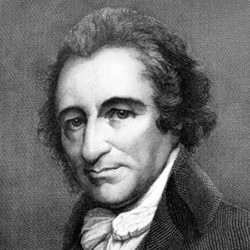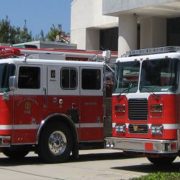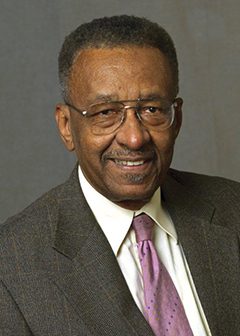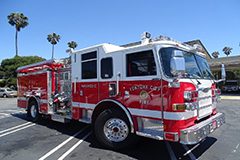$850,000 Players Club Loan by City

It will be of little avail to the people that the laws are made by men of their choice,
if the laws are so voluminous that they cannot be read, or so incoherent that they cannot be understood; (or) if they…undergo such incessant changes that no man who knows what the law is today can guess what it will be tomorrow
—James Madison, Federalist Number 62
VENTURA THE ART CITY, OR IS IT THE GAMBLING CITY?
[The $2,000,000 bet on Players Club]

Ventura is financing Players Club Casino’s move to the Auto Mall.
The City Council has failed in their last two efforts to increase the taxes of the citizens of this community; however, our City Manager and the Council continue, facing another $2,000,000 shortfall in the next budget, are exploring new ways to raise money – without your vote but using your tax money.
The latest effort involves an $850,000 loan to The Players Poker Club, aka The Players Casino, now located at the old Volvo dealership in the auto mall area, at 8% interest.

The City is borrowing $850,000 from Rabobank at 4% interest, using tax revenue in our general fund as security for the loan.
The City is borrowing $850,000 from a foreign bank – Rabobank – at 4% interest, using tax revenue in our general fund as security for the loan.
The justification for this unusual step by a municipality is set forth in and administrative report authored by Jay Panzieka, the Chief financial officer for our City. You can view that report on the City of Ventura website by scrolling down, click on “public meetings”, and under City Council click the March 19 Council meeting. It is agenda item number 9. The Council approved the proposal. Here are the verbatim key points:
- The City faces severe revenue constraints due to the lingering impact of the recession.
- The Players Club pays a 15% tax on their revenue. This was approved by voters in 2005.
- The Players Club wants to add two more gambling tables, a restaurant and lounge that will be serving beverage (alcohol).
- In 2010 the Players Club was allowed to expand their operation from 6 tables to 18 tables.
- Until the recent move the Club was paying $250,000 a year in taxes, however since the move to the new site in July, 2011, they have paid $261,066 and $262,696 in the first and second quarters respectively. They estimate they will pay a similar amount in taxes in the final two quarters.
- This tax revenue of an estimated $1,053,773 per year is based on 16 tables. The addition of two more tables is estimated to return another $65,000 per year per table plus revenue from the sale of food and alcohol.
- There is a risk of failure should the Players Club not meet their obligation; however because of their history of success during difficult economic times the benefits outweigh the risks.
- The loan is to be paid off over a two year period during which time the City will earn $37,000 in interest. Payments to start May 1, 2012.
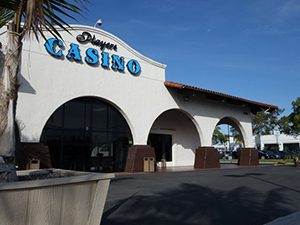
Players Club relocates to the Auto Mall.
So why did the City take this unusual step in financing a gambling casino? The arguments in favor of the loan goes as follows: the City has a monopoly on gambling tables until 2020, that it is the only gambling establishment in our county, and that due to the dismal prospects for new tax revenue this loan may result in more tax revenue. The entire model is predicated on the assumption that if they build it “they will come to gamble”.
Calwatchdog had this to say: “California redevelopment agencies may have been phased out. But cities are getting into the business of loan sharking to offset a decline in sales and property taxes.
This is a version of a “buy low” and “sell high” strategy. Only in this case it is “borrowing at a low interest rate” and “lending at a higher rate.” It’s called arbitraging in finance.
Arbitraging is expressly forbidden with tax-exempt bonds. That is because local government is a tax-exempt organization. It could potentially borrow cheap money at tax-exempt rates and re-invest it at a higher market rate. It thus could reap a profit with the public’s cheap money. All this is illegal under Regulation 1.148-0(a) of the I.R.S Code.
This explains why the city of Ventura used a private lender in the Netherlands to borrow money from instead of using bond funds. It is not illegal to arbitrage bank funds. The way the City of Ventura spins it: it is “restoring confidence and lending to a casino.” The city also denies that the city itself is a “bank.”
But if these loans are not a high risk why is the interest rate doubled? Interest rates serve as a substitute or indicator of risk. In fact, they are often called a “risk rate.” The higher the risk, the higher the interest rate and vice versa. A loan for double the normal interest rate would indicate a loan with double the risk. Eight (8%) percent would be a “junk bond” interest rate in the private sector today.
But if the risk in fact is low, as Mr. Panzieka and the City Council suggest, then the city is engaged in arbitrage, a form of speculative investing, and they are doing it with public money. Thus, it appears that City government, deprived of their redevelopment money and dismal tax revenues are venturing into very dangerous waters. Calwatchdog said – “redevelopment agencies are getting into the loan sharking business. A loan shark is informally defined as “one who lends money at exorbitant interest rates…”
But probably the bigger questions are:
- Was the Players Club Casino not able to secure a loan of their own in the market place?
- Should City Councils be doing the job of private enterprise using the public treasury as the guarantor?
- Should the City be risking public funds as collateral for a loan to a gambling enterprise?
Given that at least 85% of the current budget is used to pay salaries, health care and pension to employees, of which 58% is devoted to police and fire, it is pretty obvious where these hoped for new sources of revenue will be spent.

Players Club represents a new revenue source for Ventura.
Now consider if you will the current proposal of Mayor Tracy to hire 6 more police officers and the City Council decision to pay $1 million dollar for a new fire truck, and it becomes crystal clear that the City is more interested in finding any and all sources for new revenue, fees and pursuing innovative revenue schemes rather than pursuing effective cost controls or reforming pension plans that are absolutely not sustainable.
This Council can talk about reforms and pretend that they made great strides in reforming the police and fire contracts, but the reality is that between 2008 and 2011, the unfunded obligations for police and fire alone increased from $43,496,873 to $68,385,380. That represents an increase of 57% over a 4 year period during which no officers or firemen were added.
Look for cities to start using their permitting powers together with loan arbitraging to create or enlarge more businesses that don’t create real wealth or increase overall productivity, but instead only generate short term tax revenue.
Editors Comments:
We do not share the view of CALWATCHDOG in its entirety. Mr. Panzieka has presented a logical means for increasing tax revenues. It is a legitimate function of our City to help, and encourage local business to grow even if it is gambling, however doubling the interest rate to 8% is troublesome, because it does reflects there is greater risk in the transaction, and it is in effect state sponsored and financed capitalism. If the Players Club succeeds, as we hope, then the gamble will have worked. If they fail then we will suffer a triple whammy – pay off the $850,000 loan to Rabobank, loss of $1,000,000 in tax revenue and then have to shop for someone else to acquire the gambling license. That is a $2,000,000 bet.
Editors:
B. Alviani K. Corse T. Cook
J. Tingstrom R. Mccord S. Doll
For more information like this, subscribe to our newsletter, Res Publica. Click here to enter your name and email address.




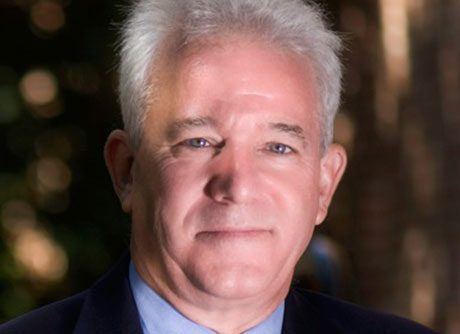





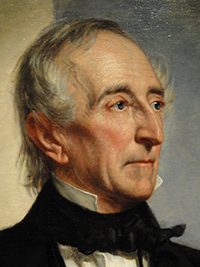

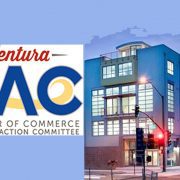
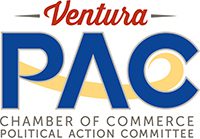 The Political Action Committee (PAC) of the Ventura Chamber of Commerce will present a candidates forum to the citizens of Ventura, at the Marriott Beach Hotel, located at 2055 East Harbor Boulevard, Ventura, commencing at 7 P.M.
The Political Action Committee (PAC) of the Ventura Chamber of Commerce will present a candidates forum to the citizens of Ventura, at the Marriott Beach Hotel, located at 2055 East Harbor Boulevard, Ventura, commencing at 7 P.M.

